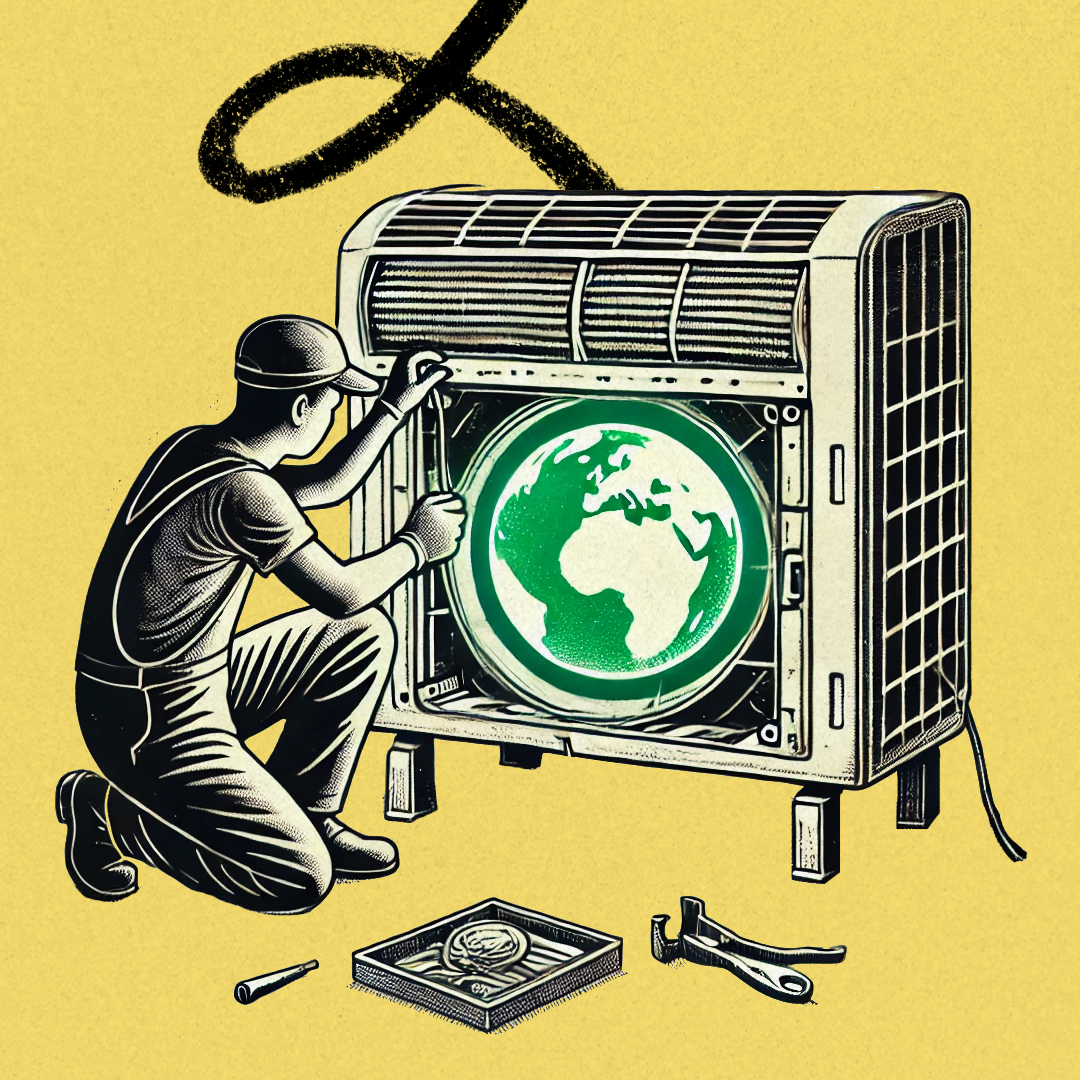
Sometimes life takes you to unexpected places, and you don’t know that next job, that next trip, that next move until it stares you in the face. That’s the story of Louis Potok, a data scientist who built a company that aims to prevent more emissions than Russia produces annually, simply by properly disposing of air conditioner fluid. It’s also the story of Jamie Wong, an early Figma engineer who was Potok’s angel investor, and the author of this piece, the second and final part in a series. (Read part one.) Potok followed a how-to book’s first suggestion of addressing the global refrigerant crisis fully down the rabbit hole, which took him around the world to Southeast Asia. This piece is a refreshing look at two people who followed an “unsexy problem” no matter where it led them.—Kate Lee
Louis Potok is, as he puts it, “attracted to unsexy problems.” Flipping through the opening pages of the book in front of him, he found one. It wasn’t flashy, but it was “so doable.”
The book, Drawdown, was a guide to the 100 most pressing climate solutions of our time. Potok stopped on the first entry and knew he had found what he was going to do next.
Potok was never a prime candidate to devote his life to repairing the environment. He was born in Manhattan, and as a child, spent far more time with books and computers than communing with nature. After finishing an economics degree at the University of Chicago, he joined a nonprofit Harvard University spinout called ideas42, where he was tasked with applying behavioral economics to problems in international development. The job took him to Ghana and Malaysia and the Philippines, chatting with locals to try and ferret out problems with microfinance interventions, like small loans to market vendors.
In the course of this work, he began to peruse the literature on its efficacy. He discovered the charity evaluator GiveWell, which became his gateway into the world of effective altruism, a kind of philosophical commitment to ameliorating the world’s problems in ways that will help the greatest number of people in the greatest possible way. Soon he was browsing through online rationalist forums such as LessWrong and looking for career advice on the website 80,000 Hours. His dominant reaction: “I like these people.”
He loved his on-the-ground international development experience at ideas42, but chafed at spending half his time writing grants that would be read once by a grant program officer and then never again. Drawn by the promise of faster-paced work environments and rationalist ideologies, he departed Manhattan for San Francisco.
In the Bay Area, he joined a fintech startup with a mission to “disrupt the broken debt collection industry.” Later he led data science at a healthcare startup called Agathos to improve the consistency of care that patients receive between different medical providers. These were all unsexy problems.
In 2019, in the office of a nonprofit data science organization where Potok volunteered in his spare time, he pulled a book from the shelf. Drawdown is a compilation of 100 climate solutions ranging from the obvious (solar and wind power) to the surprising (family planning and improved cattle feed). Each solution comes annotated with the magnitude of greenhouse gas emissions it could prevent and the economic cost of implementing it. The quantified approach to addressing climate change appealed to both Potok’s inner data scientist and his inner economist. After flipping through the pages, he bought himself a copy.
Potok’s idea was to work through Drawdown, item by item, reading up on the proposed solutions before searching to make sure companies were working to address them. He planned to move from number 1 to 2 to 3, and so on, until he found a climate problem that was woefully unaddressed.
He never made it past the first item—a problem much more severe than commercial aviation and far less discussed. It was so doable.
The book that sparked a climate change mission
Potok’s San Francisco bedroom was one Scarface poster short of being a typical 29-year-old guy’s quarters. Tidy but minimally adorned, a place to sleep rather than a place to relax. It was here, in 2019, that he began his investigation in earnest, with a fresh copy of Drawdown on his desk.
The book was opened to a two-page glossy spread titled “Materials: Refrigeration.” The right-hand summary statistics informed him that the opportunity ranked number 1 of all the solutions cataloged in the book. Refrigerants—the substances pumped around inside air conditioners and refrigerators to transfer heat from one place to another—are potent greenhouse gasses. If they reach the atmosphere, they warm our planet just as carbon dioxide does, but more intensely. Refrigerants constitute nearly 6 percent of all emissions. That’s three times more than all emissions from aviation.
Drawdown isn’t just a catalog of problems, it’s a catalog of solutions. In the case of the refrigeration section, it highlighted disposal via thermal destruction. At extremely high temperatures, refrigerants decompose into much less environmentally harmful compounds. Here was the crux of the game: If we throw the refrigerant into a fire before it floats into the sky, we win. If it ends up in the sky in its normal state, we all lose.
As Potok worked through the history of refrigerants and collected his notes, he realized that the problem of refrigerant disposal had a few appealing properties, and one extraordinarily inconvenient one.
First under the pros column: Disposal doesn’t require any groundbreaking technology. In 1987, international scientists and policymakers devised a protocol for destroying refrigerants—most of which involve integration into existing chemical processes. Cement kilns can be modified in a straightforward manner, and they’re both plentiful and geographically distributed. Responsible disposal is already part of standard practice in the United States as part of EPA regulations. Equivalent regulation just doesn’t exist yet in much of the world.
The second boon is that solving this problem doesn’t require changing buyers’ behavior. It doesn’t require convincing billions of people to go vegetarian, or to take a staycation instead of an exotic beach getaway. Nor does it require millions of small business owners to make bets on novel building materials or new agricultural practices. People simply don’t know and don’t care what happens to their refrigerant once it leaves their air conditioners.
The incredibly inconvenient property is that the only benefit of refrigerant disposal is preventing global warming. You can’t sell a Tesla of refrigerant disposal. Responsibly disposing of refrigerant simply cannot be cheaper or easier than the alternative of letting it leak into the atmosphere. So how do you get anyone to pay for this?
In his ongoing research, Potok discovered that a company called EOS Climate had been paid to dispose of refrigerant in the past. EOS Climate hunted for old tanks of now-banned refrigerants and destroyed them. They were responding to a bounty established by the California government to destroy refrigerants as part of the state’s climate commitments.
Potok found a second-degree connection in his network who had previously worked at EOS Climate. When he asked for the mutual contact for an introduction, the mutual relayed the response: “Tell Louis this is a solved problem.”
Potok was skeptical. While he found a few companies hunting for and destroying refrigerants, there was a glaring lack of companies operating in Asia—a region that is rapidly getting hotter and richer, building toward a massive deployment of air conditioners. And nobody was positioned to prevent the enormous emission of greenhouse gasses that will result.
The problem was important—absent intervention, refrigerants would continue to contribute more to global warming than aviation does. The problem was neglected—despite the importance, a paltry few companies were working on the problem, and none in Asia. And lastly, the problem was tractable—no groundbreaking technology was needed, and there was precedent for companies being paid for this work. It was doable. All Potok needed was a little push for him to actually do it.
The first nudge came from attending Effective Altruism Global, a conference for adherents to the ideologies that created organizations like 80,000 Hours and GiveWell. Years later, Potok still remembers a fellow attendee telling him about his plans to bioengineer shrimp to feel less pain. If that guy could alter a genome for animal welfare, Potok thought, surely he could throw some chemicals in a fire—even if it required him to move to Asia and start a company first.
The second nudge came from meeting with a personal mentor from the data science nonprofit that Potok had been using as a sounding board throughout his refrigerant explorations. While Potok was verbally unloading his latest batch of insights, his mentor stopped him and asked, “How old are you? Thirty?”
Potok replied, “Twenty-nine.”
“You’re young. Go do it,” his mentor advised.
In the fall of 2019, Potok gave his two-week notice at Agathos and booked a flight to Cambodia.
Not all molecules are created equal
Carbon dioxide gets the majority of climate change-related press coverage, but it’s not the only gas in the atmosphere warming our planet. To date, our planet has warmed an average of 1.18 degrees Celsius over pre-industrial levels. Of those, only around 0.8 degrees are due to carbon dioxide.
Source: Intergovernmental Panel on Climate Change, 2021.Methane is the next ranking heavy hitter, at 0.5 degrees Celsius. You may know methane as the gas in cow farts (though cow burps are the bigger problem). Methane comes from leaks from natural gas extraction and transportation, decomposition of organic matter in landfills, and, indeed, gassy cattle.
As far as global warming is concerned, not all molecules are created equal. One ton of methane and one ton of carbon dioxide have very different warming effects on our planet. Each gas has its own unique set of properties that influence its contribution to global warming—most importantly, what wavelengths of light it absorbs and how long it stays in the atmosphere.
To help policymakers weigh tradeoffs between different climate initiatives, scientists devised a way of combining these effects into a single metric per gas: Global Warming Potential (GWP). Carbon dioxide has, by definition, a GWP of 1. All other gasses are measured against carbon dioxide. Methane has a GWP of 25, indicating that one ton of methane emitted will have a similar warming effect as 25 tons of carbon dioxide.
Source: All illustrations by the author.So while we emit far less methane than carbon dioxide each year, each bit of methane has an outsized effect compared to carbon dioxide. Are there other gasses where this effect is even more pronounced?
Regrettably, yes. Chlorofluorocarbons (CFCs), which you might remember as the cause of the ozone hole, are one such gas. They are not merely tens of times more potent than carbon dioxide, but thousands. CFC-12, the most abundant kind of CFC in the atmosphere, has a GWP of 10,200.
CFCs are most commonly used as refrigerants—the juice of an air conditioner, if you will, though gaseous at ambient pressure. To put a GWP of 10,200 into context, let’s consider the effect of dumping out the refrigerant from an old air conditioner.A home AC unit has about five pounds of refrigerant in it. If that refrigerant is CFC-12, then letting it reach the atmosphere has the same warming effect as burning around 2,600 gallons of gasoline. Leaking that mere five pounds would warm the planet as much as commuting in a gas car for six years. This potency is the key to understanding how refrigerants pose a greater threat to our climate than aviation.
Mercifully, CFCs leaking into the atmosphere is mostly a problem of decades past. It’s their successors Louis Potok is worried about.Slow motion whack-a-mole
In 1987, policymakers and negotiators from around the world gathered in Quebec to discuss the fate of CFCs. They were there to hash out the details of the international regulation later known as the Montreal Protocol.
Negotiations concluded, attendees signed it and returned to their respective nations to convince their home governments to ratify the agreement, turning it into law. In time, every member of the United Nations ratified the Montreal Protocol—a decisive victory in the fight against the ozone hole. In the decades that followed, it succeeded in driving CFC consumption down to nearly zero, making it perhaps the most effective international environmental regulation of all time.
While CFC production gradually vanished, our collective desire to cool our homes and our food did not. So the market adapted. Manufacturers devised new chemical compounds to act as refrigerants. In response, the regulators began the world’s slowest game of whack-a-mole.Manufacturers’ answer to the CFC ban was the second generation of refrigerants, known as HCFCs. They, too, had a tendency to destroy ozone, just less so than CFCs. Five years after the original signing of the Montreal Protocol, the UN extended the ban to include HCFCs in the 1992 Copenhagen Amendment.
Generation three is known as HFCs. At last, a generation of refrigerants emerged that offered no threat to the ozone layer. But they remain potent greenhouse gasses—HFCs have GWPs in the thousands. In recognition of the unsustainability of emitting massive amounts of highly potent greenhouse gasses, the UN extended the Montreal Protocol once more to regulate HFCs in the 2016 Kigali Amendment. These are truly recent developments—the United States only ratified the agreement in 2022.As the market moves past each generation of refrigerants, the atmospheric concentration of those refrigerants gradually falls. We’re already past peak concentration for the first generation (CFCs) and approaching the peak for second-generation refrigerants (HCFCs).
Source: National Oceanic and Atmospheric Administration.So we’ve defeated environmentally hazardous refrigerants with regulation, right? First the ozone hole, then the effect of refrigerants on climate change. Sadly, no.
Just as the original Montreal Protocol slowly phased out CFCs over many decades to allow manufacturers and consumers to adapt, each amendment has its own phase-out timeline. In recognition of developed nations contributing the majority of historical emissions, less developed nations were given a less aggressive phase-out schedule. The mandated timeline doesn’t require developing nations to even begin decreasing consumption of third-generation refrigerants (HFCs) until 2029. And HFCs are still potent greenhouse gasses.
As Potok walked me through this conundrum, he framed it as a race. Each nation is rushing toward two critical milestones: when households become rich enough to buy air conditioners, and when regulation bans environmentally hazardous refrigerants.
China, India, and most countries of Southeast Asia were among the nations given the more lenient phase-out timelines. These nations are collectively home to more than 3 billion people, and are getting richer. When nations with sweltering summers urbanize and build wealth, adoption of air conditioners rises rapidly. In these regions, household wealth is going to outpace regulation.
Summary of control measures under the Montreal Protocol. Source: UNEP.
Global Air Conditioner Stock, IEA 2018, CC BY 4.0.What this means concretely: Billions more air conditioning units will be filled with greenhouse gasses thousands of times more potent than carbon dioxide. And if we don’t change something fast, all of that air conditioner juice ends up in the sky.
Figuring out what, exactly, to change is what brought Potok to Cambodia.
Flying blind in Siem Reap
Cambodia was not a carefully picked landing spot, nor was it the result of meticulous spreadsheeting of AC market penetration or economic conditions. Rather, Potok had a cousin living in Cambodia and heard the visas were easy to come by.
After deplaning, Potok planned to talk to key stakeholders like government regulators, scrapyard owners, and AC technicians. He didn’t speak the local language, Khmer, but a friend connected him to a tour guide he described as “a bodybuilder that really likes beer” to act as a translator.
Bodybuilder in tow, Potok paid a visit to a local scrapyard. With his translator’s help, he found air conditioners aplenty, but a paucity of refrigerant inside those units. When a technician removes an old AC unit from a home or business, the tubes housing the flowing refrigerant are disconnected, allowing the refrigerant to leak into the atmosphere before the unit is transported. Most of the refrigerant is already gone before the AC unit reaches the scrapyard.
Contracting with the scrapyards wouldn’t be enough. To address the problem, he’d need to transact with individual AC technicians. With that part clarified, Potok had a clear map of the operational machine he’d need to build.
First, he would need to form relationships with local AC technicians to advertise a bounty for collecting used refrigerant. Second, he would need warehouse space to hold the collected refrigerant. Third, he’d need to find a facility certified to destroy the refrigerant. To keep track of the refrigerant at every step in this process, he would need to build purpose-made software to run on technicians’ phones and on his company’s servers. To finance the operation, Potok would sell voluntary carbon offsets.
Voluntary carbon offsets are a core mechanism behind sustainability claims made by corporations. You might see an option on flights or car rentals to offset your emissions, or see a "Climate Neutral" certification for brands like REI or Allbirds. The high-level idea is simple: If a corporation can’t or doesn’t want to avoid greenhouse gas emissions, it pays to prevent it happening elsewhere. Hence, it “offsets” the problem.
Typically the corporations making the sustainability claim don’t run these offset-generating projects themselves. Instead, carbon project developers perform activities preventing emissions and sell an exclusive claim to the environmental benefits of those activities. The offset being purchased is a paper trail of those activities, sold on a ton-of-carbon-dioxide basis. This isn’t some niche market: By 2019, transaction volume for the voluntary carbon markets was already in the hundreds of millions of dollars per year.
Potok called his San Francisco housemates and told them that he wasn’t coming back. He asked a friend to move his belongings into a storage unit. He found a more professional translator through a journalist friend. He spent his 30th birthday speaking with Cambodia’s head of waste management. He was ready to build.
The world had other plans. In early 2020, Potok read early reports of a viral outbreak in Wuhan. While his friends back in America seemed remarkably unconcerned, he couldn’t help but notice the sudden absence of Chinese tourists walking around in Siem Reap. The prospect of being stranded in Cambodia if the outbreak spread was unpalatable. It was time to return Stateside to regroup and make a longer-term plan.
With his San Francisco lease canceled and his worldly belongings in storage, he chose to stay with a friend in Manhattan, landing there in March 2020. New York City confirmed its first case of Covid-19 on the first of the month. By late March, all non-essential businesses were ordered to close. Not one to stand idly by, Potok put his data science skills to use in volunteer efforts to map ICU capacity.
But even amid lockdown orders, social distancing, and ICU capacity planning, refrigerants still tugged at Potok’s mind. Once the pandemic was under control, whenever that might be, he knew he needed funding to continue his venture in Southeast Asia. Revenue would come from carbon offset sales, but he needed startup capital before he’d see any.
He scoured philanthropies’ mission statements and looked for relevant grant applications, but came up short. Refrigerants weren’t part of any grantor’s climate thesis. So Potok turned back to his tech network and began to reach out to venture investors.
The raise would take him all year.
Raising money for the climate fight
It’s not uncommon in Silicon Valley to raise a few hundred thousand dollars from venture capital firms on little more than a pitch deck and a LinkedIn profile—that is, if you’re riding a hype cycle. Refrigerant destruction in Southeast Asia was far from being in the zeitgeist in 2020, even in climate tech circles (and it’s still very niche four years later). Venture firms Potok reached out to invariably told him he was “too early” for them, or were spooked by his plans to build in Southeast Asia.
Potok refocused his efforts on angel investors. He cold-emailed Landon Brand, a cofounder of the carbon offset subscriber service Wren. Brand saw the value of Potok’s proposal, and connected him to an angel investor with the knowledge and capital to give the endorsement Potok needed: Peter Reinhardt.
Reinhardt, an MIT Aerospace dropout-turned-software startup founder, was the CEO of the customer data platform company Segment—acquired for $3.2 billion by Twilio in 2020. In his role as CEO, Reinhardt grew curious about offsetting his firm’s carbon footprint. In 2015, he invested in rainforest protection programs in Indonesia that purported to prevent emissions. But when he investigated the efficacy of the program, he started to have serious reservations.
These protection programs claimed to prevent greenhouse gas emissions by inhibiting deforestation. But predicting how much deforestation was prevented is maddeningly difficult, rife with complicating variables. Perhaps decreasing deforestation in one area merely increases it somewhere else (a problem known as “leakage”). Perhaps deforestation in this area wouldn’t have happened anyway, even without the program interventions (a problem known as “non-additionality”). Perhaps everyone is acting in good faith, but a forest fire burns down the whole area (a problem known as “impermanence”).
In 2018, fueled by a desire for climate solutions unmarred by these problems, Reinhardt co-founded Charm Industrial to remove carbon dioxide from the atmosphere rather than just prevent its emission. So when Potok came seeking funding, Reinhardt already understood the problem space.
Reinhardt recognized that refrigerant emissions addressed many of his gripes with the rainforest protection program he’d previously bought credits from—it had no leakage (responsibly disposing of refrigerant in one area doesn’t incentivize less disposal in another), high additionality (refrigerant disposal definitely won’t happen without funding specifically allocated to it), and high permanence (once refrigerants are chemically transformed to less harmful compounds, they won’t spontaneously transform back).
Satisfied that Potok’s idea had the potential to prevent massive amounts of emissions, Reinhardt wrote a check. With his anchor check in place and a few other angels pitching in, Potok had his $200,000 of starting capital. In December 2020, he incorporated his company, Recoolit, with a mission to permanently eliminate refrigerant emissions. Potok wouldn’t, however, be returning to Cambodia.
Investors and advisors encouraged Potok to choose a starting market big enough to create a billion-dollar company without relying on international expansion. While China and India were the obvious Asian markets due to their billion-plus populations, both are notoriously difficult places to do business in as a foreigner. Instead, he turned to Indonesia, a country with 270 million people—the fourth biggest in the world—and yearly sales of 2 million AC units full of greenhouse gasses.
Indonesia’s refrigerant emissions account for about 30 million tons of carbon-dioxide equivalent per year. Capturing and destroying 10 percent of that and selling offsets at $75 per ton would give Recoolit annual recurring revenue of $225 million per year.
Cash in hand, Potok watched eagerly for Indonesia to begin reissuing visas as Covid-19 restrictions began to ease. Still in Manhattan, he reached out to everyone he knew in search of Indonesian contacts. If his contacts didn’t know anyone, he’d ask them who they knew that might. Following link after link in these chains of introductions, he eventually had the contacts he needed to hire local research assistants. Whenever the borders reopened to him, he wanted to hit the ground running.
In May 2021, with money raised on a promise of starting a company in Indonesia, two local Indonesian employees, and Indonesian business visa in hand, Potok stepped foot in Indonesia for the first time in his life. After a 10-day Covid quarantine lockup, he set up office space in a local WeWork.
Jakarta became his new home.
The making of a climate startup
The Recoolit team makes a recovery of refrigerant in 2021. Source: Recoolit.In July 2021, Potok got a tip-off from his cousin’s girlfriend’s classmate’s friend’s friend. A local hotel in Jakarta had extracted old refrigerant from its commercial cooling system into some industrial canisters, and didn’t know how to get rid of it. Potok jumped on the opportunity. He showed up with two of his employees and left with canisters in hand. This was a crucial first step in proving that Recoolit’s mission was possible.
The early process of building any startup is to identify the existential risks that would break the company and stamp them out one by one. For Recoolit’s business to work, it needed to collect used refrigerant, destroy that refrigerant in a certified facility, develop software to record the process for auditing, and sell carbon offsets at a high enough price to turn a profit. Each of these processes needs to be repeatable and scale quickly. But as Paul Graham once wrote, it’s imperative that startups “do things that don’t scale”—do it once, do it manually, and then figure out how to fine-tune the process for growth.
With used refrigerant in hand from the hotel, next came the sale. Piva Capital, a small venture capital firm based in San Francisco, was sourcing carbon offsets as part of its research into carbon markets. The company wanted to focus on only the highest quality credits that were building toward meaningful climate impact and was willing to pay far above market rate. A partner at Piva reached out to Chris Tolles, an American climate founder working in agriculture tech, who referred him to Potok. Piva ultimately decided that Recoolit cleared its bar and handed Recoolit its first revenue.
Piva Capital’s 2021 offset purchases. Source: Medium/Julia Reichelstein.Last was the destruction. In a footnote in a World Bank article, Potok learned about a defunct Japanese environmental project operated in collaboration with a French multinational doing refrigerant destruction in Jakarta. He found that a cement company acquired the project. After months of fruitless back-and-forth over email, WhatsApp, and in-person meetings, Potok finally secured an agreement from the cement company for destruction. In March 2022, the refrigerant was fed into a cement kiln and heated to 2,000°C. The intense heat decomposed the refrigerant into other compounds with much lower global warming potential, permanently neutralizing 99 percent of the refrigerant’s original global warming potential.
In anticipation of scaling operations in partnership with a local AC technician association, Potok built a scrappy first version of software using Google Forms and QR codes. After training technicians to use the software on their phones, Recoolit would have full visibility of the life cycle from refrigerant capture to thermal destruction. Recovering the refrigerant, transferring it into bigger tanks for storage, and the eventual destruction would all be permanently logged for audit along with photos of each step.
In two years, after a false start in Cambodia, a year struggling to raise starting capital, and a global pandemic, Potok had taken the kernel of an idea from two pages in a book he read in San Francisco and turned it into a functioning business in Jakarta.
This was when I met Potok, over Zoom. A friend of mine knew I was exploring angel investment into climate solutions that were flying under the radar. He spoke highly of Potok and was eager to connect us. As soon as Potok logged on, I understood why. He’s exuberantly warm—the kind of person you’d imagine offering his arm to an elderly stranger crossing the street, and they’d both be laughing by the time they reached the other side. He has the kind of infectious optimism that leads you to believe what he’s chasing really is doable, and honestly not that hard. On our call, he excitedly dug into the gnarly details of environmental regulations and carbon markets with me. I wrote him a $10,000 angel check.
The journey to Indonesia
As I traced through Potok’s journey from his San Francisco apartment to a warehouse in Jakarta, I couldn’t help but examine all the excuses that would have stopped me in my tracks.
“I have no industry connections.” Neither did he.
“I’ve never even been to Indonesia.” So what?
“The whole world is in a pandemic lockdown.” Yeah, but later it won’t be.
I don’t want my entire life to be a litany of carefully crafted explanations for why I didn’t do something. So in 2023, two years after Potok landed there, I flew to Jakarta.
The idea of spending 24 hours in transit from San Francisco to Indonesia and not even going to Bali would repel most, but I needed to see the fruits of Potok’s labor. I landed in the dead of night and called a car via Grab (there’s no Uber in Indonesia).
The ambient noise of Jakarta is the ever-present buzz of scooters peppered with the beep-beep of their horns. My Uber wove through the swarm of vehicles into the labyrinthine side streets of a low-rise residential neighborhood and delivered me to my hotel in South Jakarta. While the room did technically match the photos, the craftsmanship made it clear it was a rush job optimized to give the false impression of luxury. But at $18 a night, it was hard to complain. I checked in, flipped on the AC, and passed out.
I woke at 4 a.m., not because of jetlag, but because of the adzan—the Islamic call to prayer—thrust into my ears by a loudspeaker mounted on a nearby mosque. Jakarta, a dominantly Muslim city, is home to more than 3,000 mosques. The prayer call continued for a full hour.
The true charms of Jakarta began to shine at breakfast time. Mere footsteps out of the hotel, I found one of Jakarta’s iconic bubur ayam stalls—a chicken porridge served in a styrofoam container with deep-fried shrimp chips and flavorful sauces in tied-off plastic bags. Fifteen thousand Rupiah (about $1), ready in five minutes—absolutely delicious. Hunger sated, it was time to meet Louis in person for the first time.
Photo courtesy of the author.Recoolit’s headquarters is in a mixed-use mall complex in South Jakarta. On entry, I was asked by a uniformed security officer to examine my backpack and walk through a metal detector—a result of increased security due to a series of terrorist bombing attacks. This is standard practice in public places all over Jakarta, though many view it as a security theater. It’s hard to ignore the fact that officers barely glance into bags.
Once inside, I met Potok in the lobby of a coworking space. Recoolit started in a WeWork, but Potok quickly discovered a local knockoff called GoWork available for rent at half the price. He brought me to their six-seat private office space and introduced me to the team. Ning Jeng, his recently added cofounder, had just returned after presenting to the Montreal Protocol’s 45th anniversary working group, where he discussed market mechanisms for managing refrigerants.
Potok led me on a guided tour of their warehouse on the outskirts of the city. Inside, Recoolit keeps an impressive stash of compressed gas cylinders. Each cylinder, meticulously labeled and tagged with a QR code, stores refrigerant awaiting a trip to the cement kiln for verified destruction. In the two years since Potok landed in Jakarta, Recoolit has destroyed enough refrigerant to match the emissions of 1,100 tons of carbon dioxide—the equivalent to taking 2,600 cars off the road for a year. In the warehouse, they’ve collected nearly ten times that, all ready for destruction. (If you want to put your company’s dollars to good climate use, Recoolit is taking orders.)
To continue scaling, Recoolit couldn’t rely on one-off discoveries of refrigerant or cold-calling AC technicians. So I was delighted to attend a ceremonial opening of an equipment depot in partnership with a local AC technician association. The event served as a training for the attending AC technicians on how to use Recoolit’s mobile software and included a demonstration of recovering refrigerant from an AC unit on site. Technicians will use refrigerant recovery equipment they pick up from depots like this one to return refrigerant to tanks. Once recorded in Recoolit’s software, the tanks will be whisked away by local logistics companies and delivered to Recoolit’s warehouse.
As I sat at the back of the crowd, a technician named Muhammad remarked to me how much he appreciated learning about the environmental impact of refrigerants from Recoolit. He said it felt good to be doing something to help the environment.
After a week of warehouses, depot openings, incredible satay, and ever-present air conditioning, it was time for me to return home. As I paced around Jakarta’s Soekarno-Hatta International Airport waiting for my flight, mentally sifting through the hours of interviews I’d recorded with Potok, I was struck by the simplicity of it all. There was no mind-blowing technological insight, no high-stakes business gambit, no perfect explanation for why Potok was exactly the man for the job. He just saw a problem—a huge one that nobody else was willing to work on—and moved one foot after the other until he started solving it. And he never gave up.
In a blog post from July 2022, Recoolit revealed the scope of their ambitions: to prevent 2 billion tons of emissions by 2032—more than the total annual emissions of Russia. Louis Potok and his team think this is, well, “so doable.”
Louis Potok in Recoolit’s storage warehouse in Jakarta, 2023. Source: Photo by the author.Jamie Wong is a writer, software engineer, and angel investor living in San Francisco. Previously an early software engineer at Figma and Khan Academy, Jamie is currently a member of South Park Commons. You can read more of his writing on his personal website.
To read more essays like this, subscribe to Every, and follow us on X at @every and on LinkedIn.
The Only Subscription
You Need to
Stay at the
Edge of AI
The essential toolkit for those shaping the future
"This might be the best value you
can get from an AI subscription."
- Jay S.
Join 100,000+ leaders, builders, and innovators

Email address
Already have an account? Sign in
What is included in a subscription?
Daily insights from AI pioneers + early access to powerful AI tools
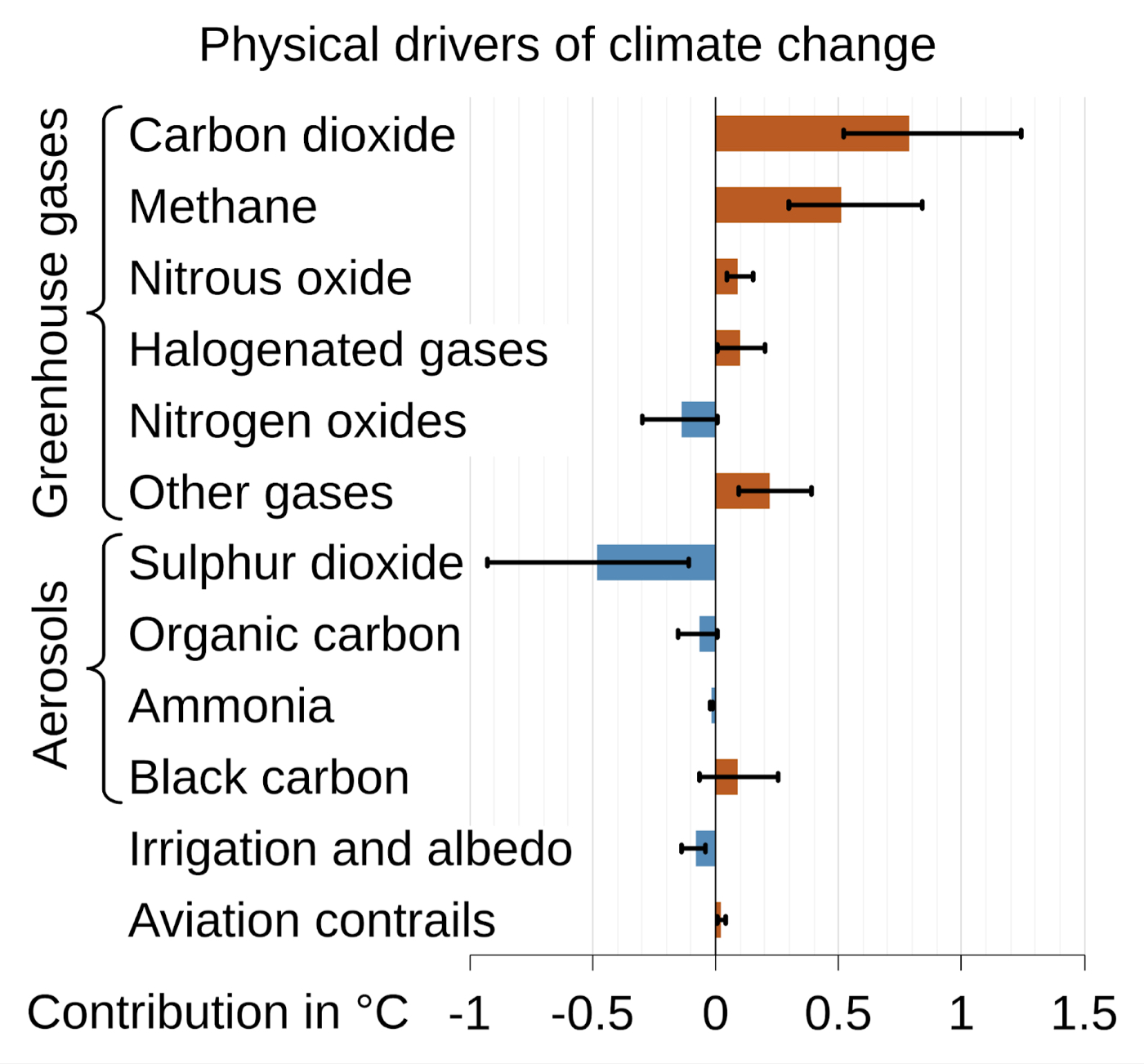
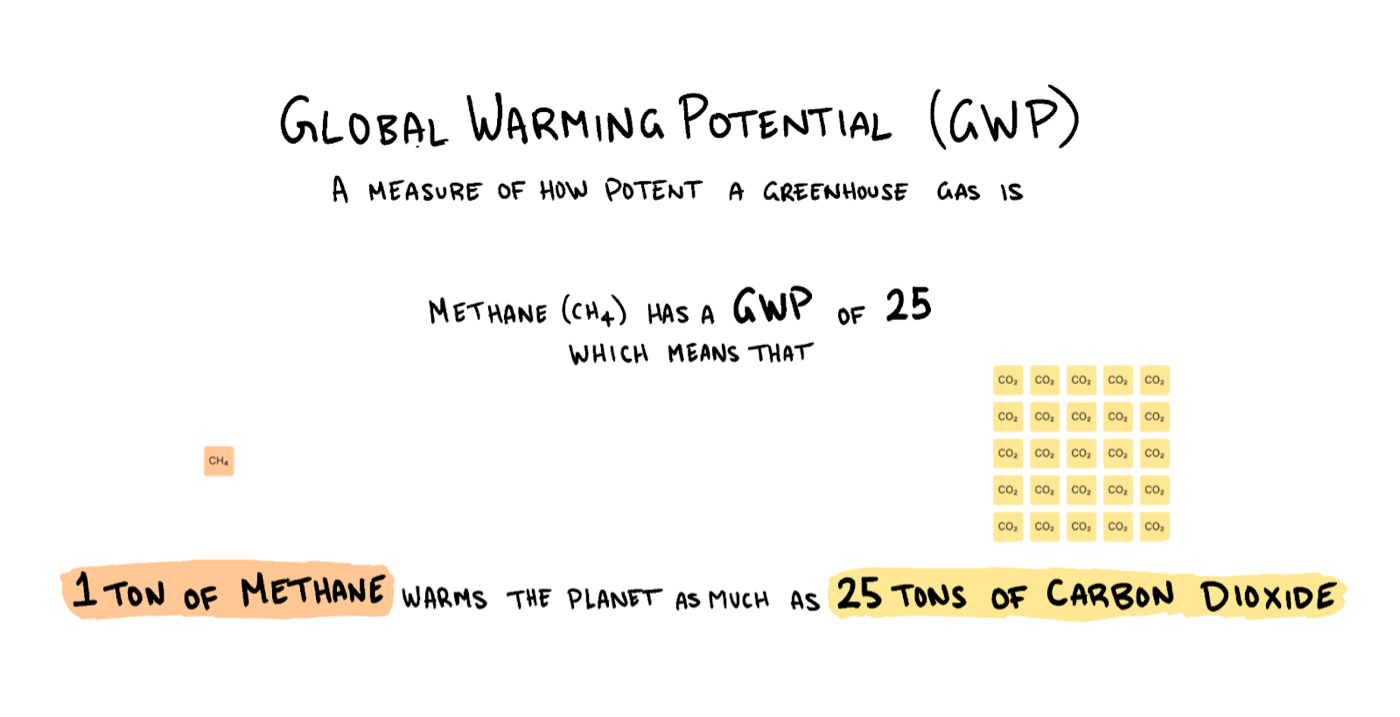
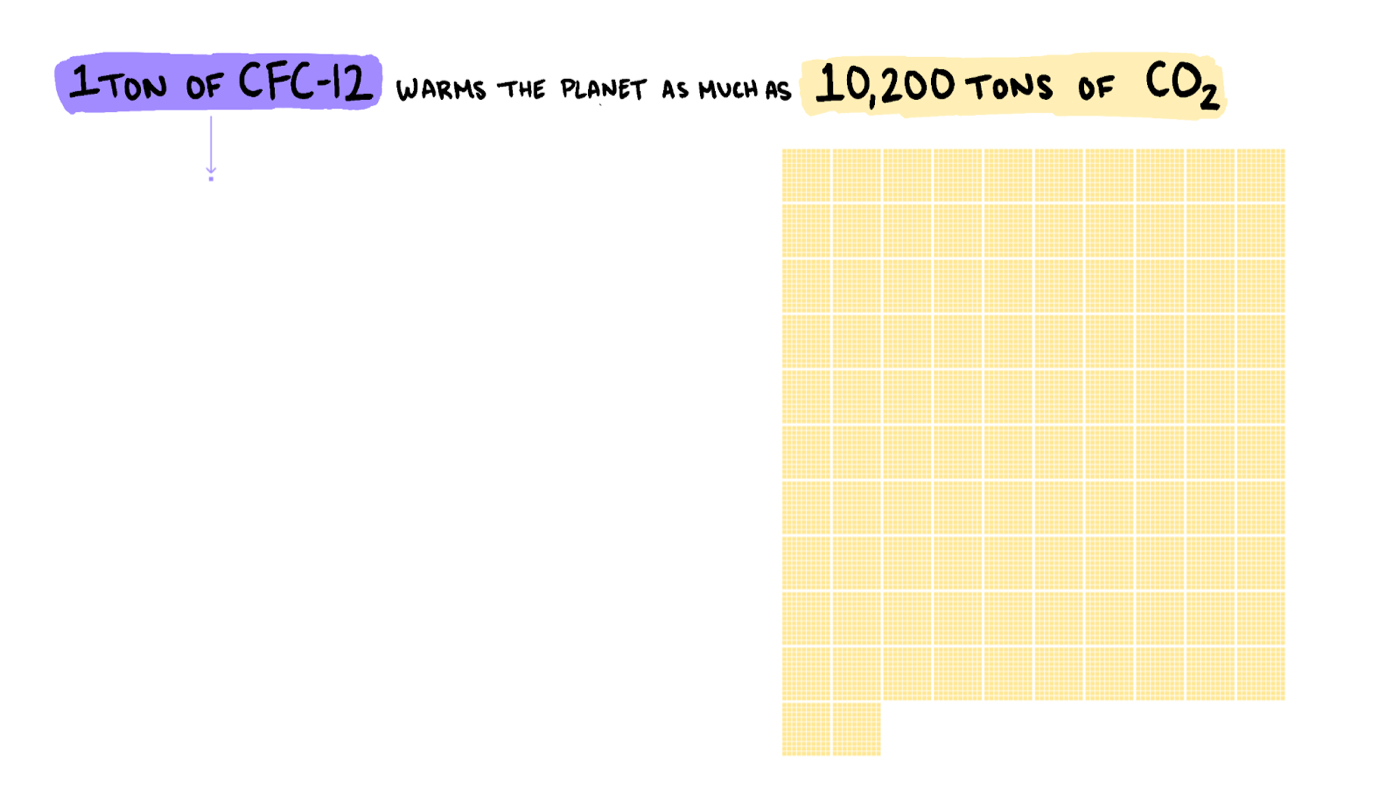
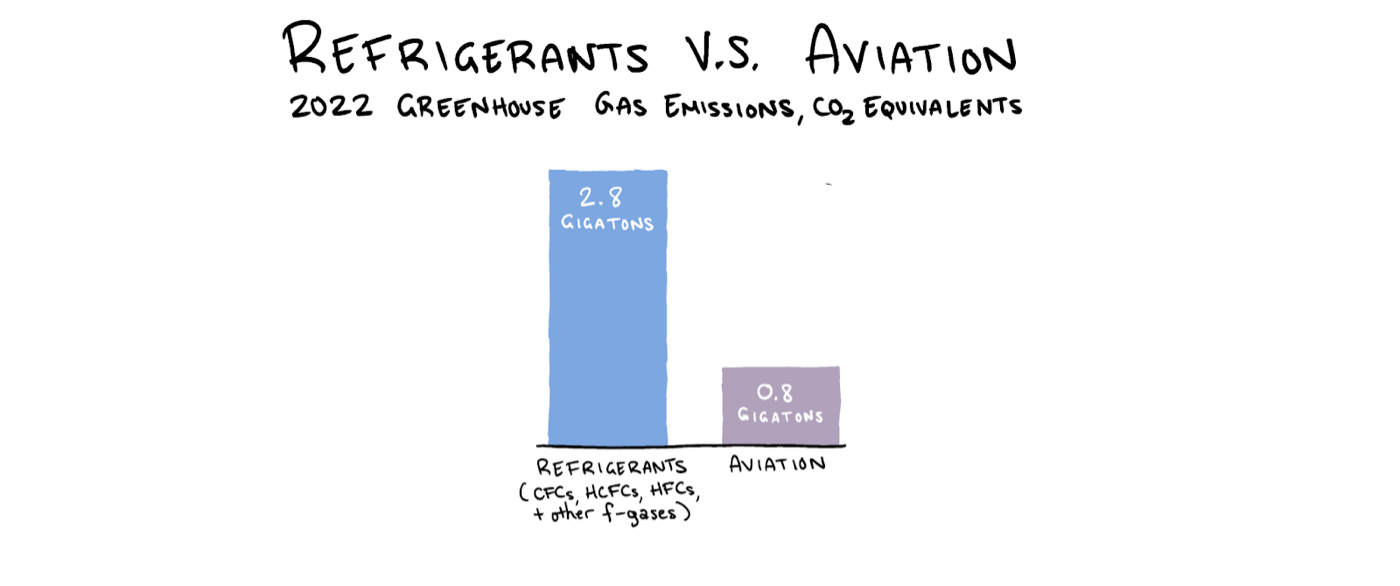

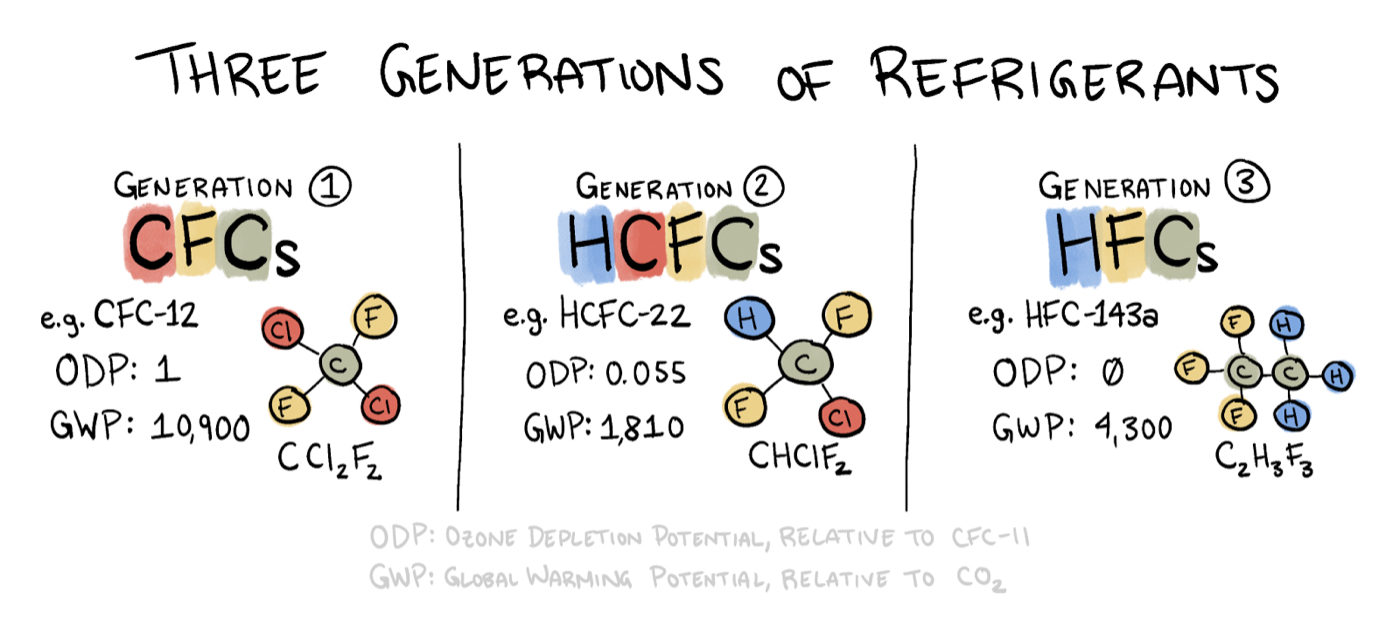
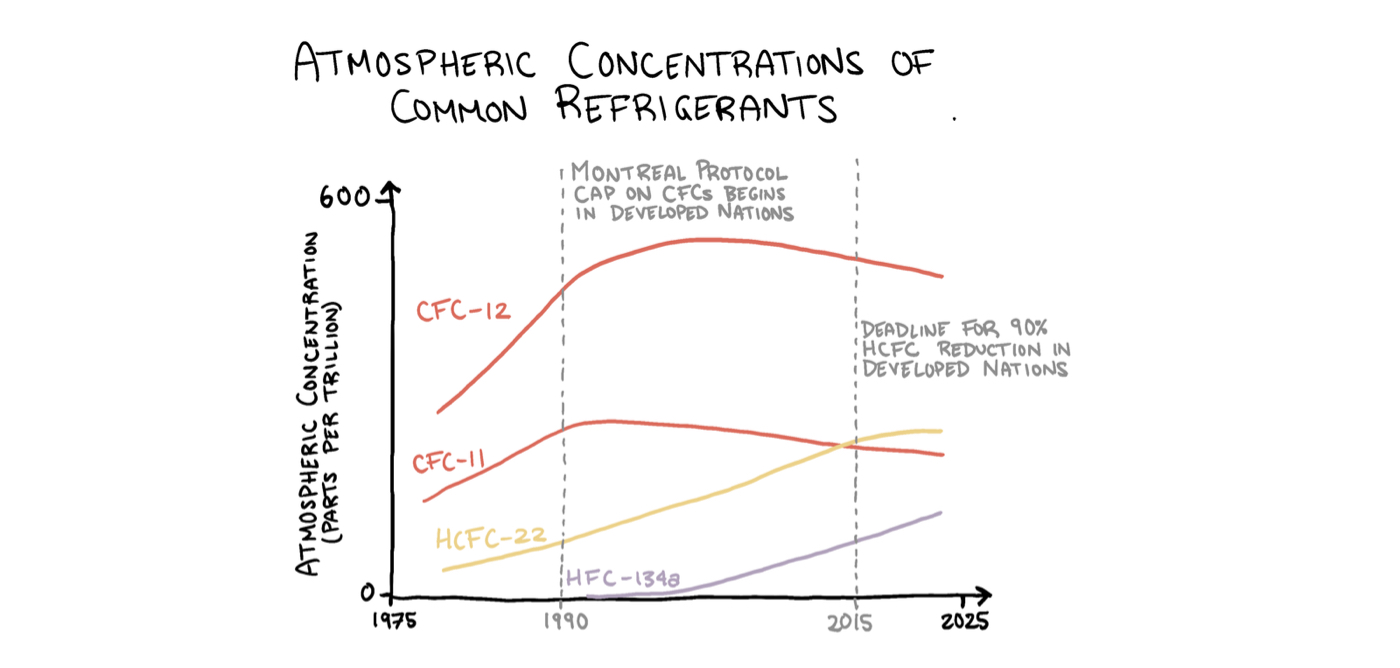
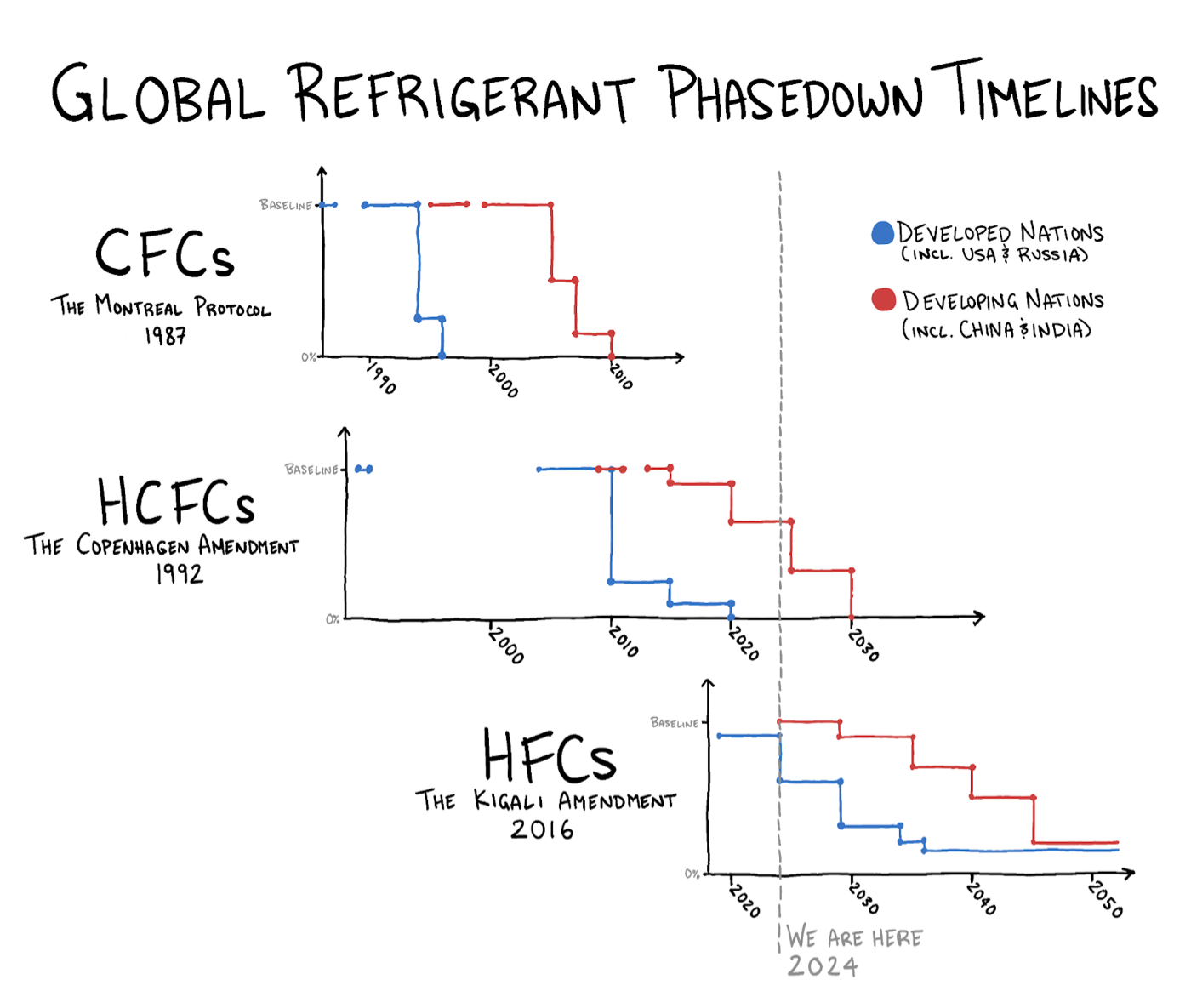
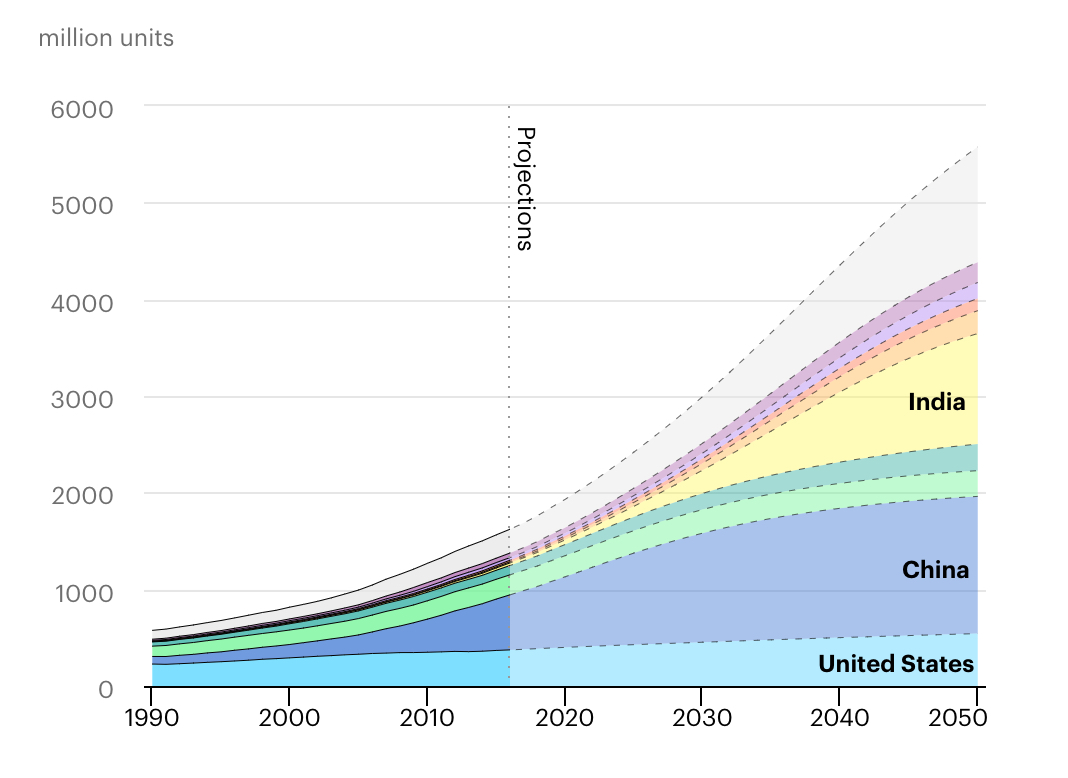
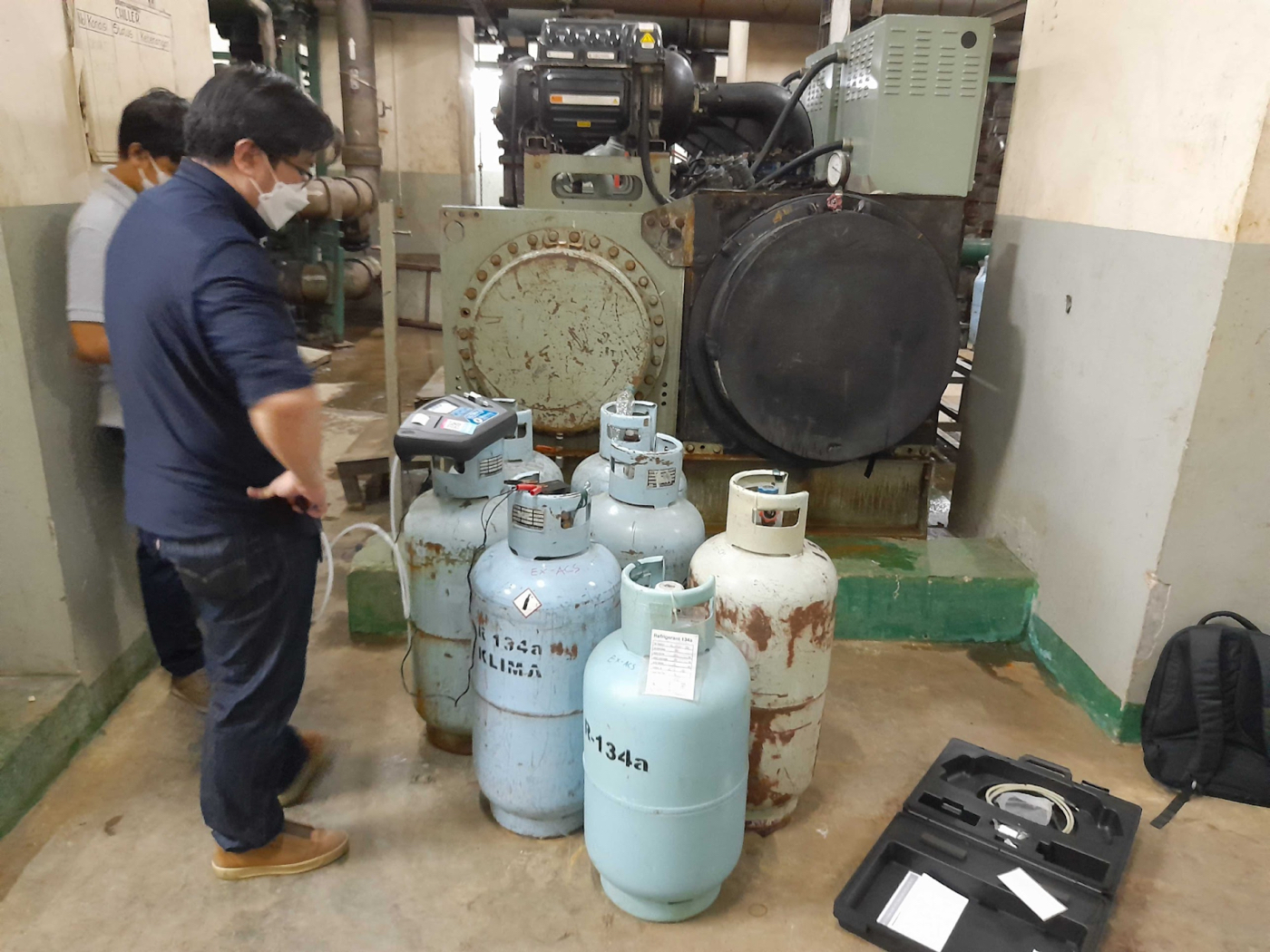


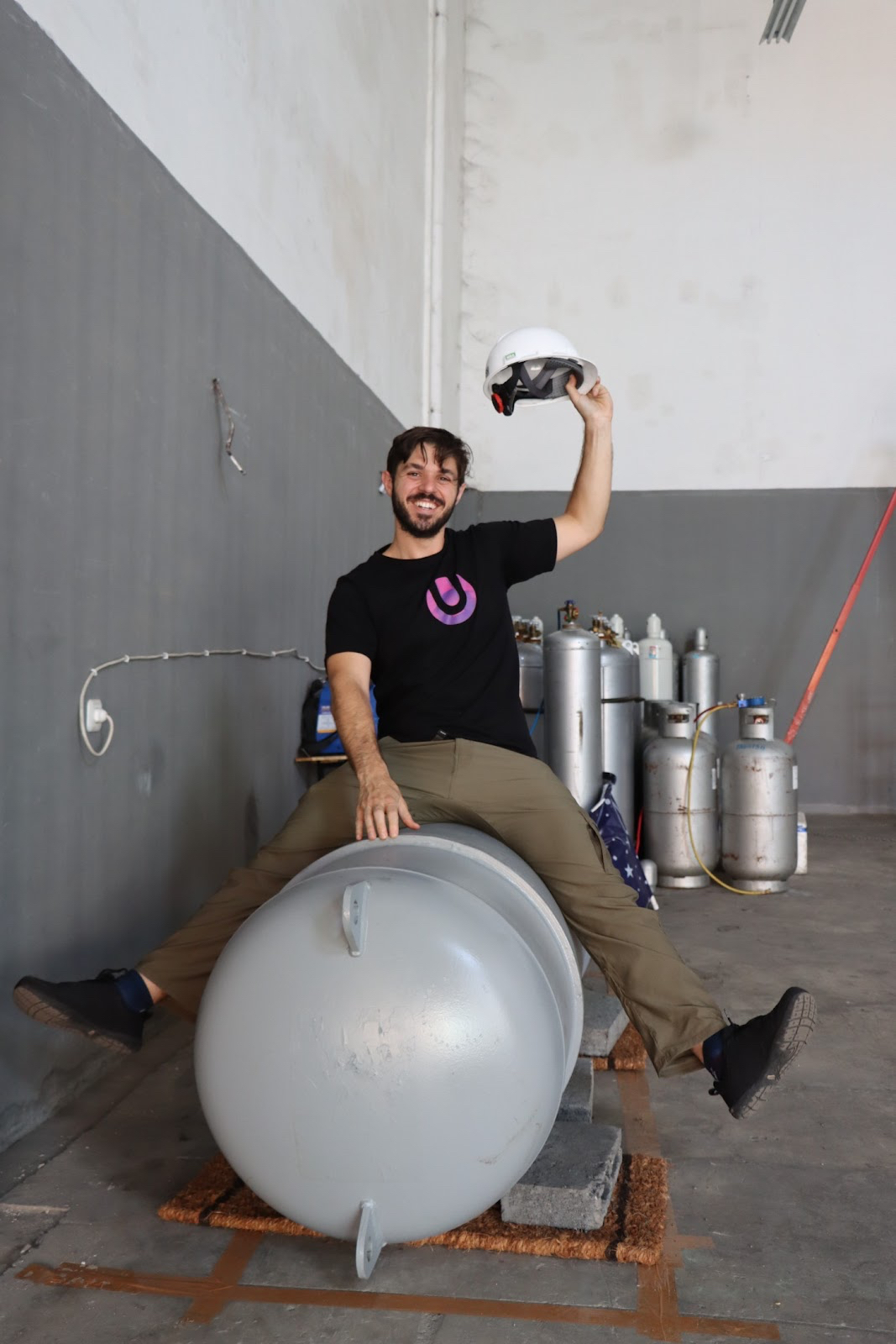






Comments
Don't have an account? Sign up!
Inspiring story! We need more Louis Potoks in this world.